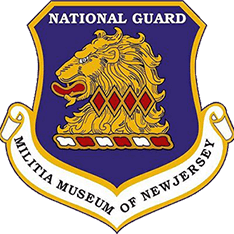CENTER FOR U.S. WAR
VETERANS' ORAL HISTORIES
World War II
William D. Laird
World War II Oral History Interview
US Army, 5th Field Artillery Battalion
Date: May 12, 2009
Interviewer: Carol Fowler
Summarizer: Emily Pascali
Editor: Professor Melissa Ziobro, Monmouth University

Summary

William D. Laird was born in New York City the son of a Canadian World War I army veteran and the nephew of an American World War I navy cook; and, he grew up listening to their war stories. One that stood out for him was his father’s account of being detailed to clean up after horses. Laird concluded from that tale that he never wanted to even be around horses, much less clean up after them. Ironically, when he was in the army at Fort Devens, Massachusetts, one of his first assignments was tending to horses.
Laird recalled that, prior to joining the military, he was very aware of what was going on around the world, and he knew that war was coming. He researched various army units and enlisted in the army in October, 1940, one month after the draft was instituted. Laird took a great deal of pride in volunteering, rather than waiting to be drafted. He stated that, because of his early enlistment, he received extensive training from experienced instructors, which, later on, following massive expansion of the military would not be available. Laird was also extremely proud of the rich history surrounding his unit, the 5th Field Artillery Battalion, which traced its lineage back to Captain Alexander Hamilton’s New York Provincial Company of Artillery, organized in 1776, making it the oldest active duty unit in the American army. Hamilton’s battery was crucial to the American victory at Trenton on Christmas Day, 1776, and the Hamilton family crest serves as the unit’s badge.
During his basic training, conducted at Madison Barracks, Sackett’s Harbor, New York, Laird was taught his unit’s history, as well as basic combat and artillery skills. Assigned to the battalion’s Headquarters Battery, he developed an interest in radio communications after a winter firing drill, when he was attached to the battalion radio team. Laird was interested in radios and liked the idea of being in a relatively warm place, rather than serving the guns in the snow and freezing cold. He gained a permanent spot on the team. Radio communications were very important in artillery fire, providing necessary liaison between forward observers and a battery’s fire direction center to make sure rounds landed where they were supposed to, as well as for coordination with other batteries in the division.

In 1941, Laird’s battalion moved around the country for training and live fire exercises, from Fort Devens, Massachusetts to locations in Vermont, South Carolina, and Florida. He remembered this experience as sometimes being enjoyable and at other times boring. At the conclusion of the training, the unit returned to Fort Devens, where the 1st Infantry Division, of which the 5th Battalion was a component, was reorganized, as well as issued new weapons. The division, known as “The Big Red One,” was created in 1917, and it remains to this day the oldest division in continuous service in the United States army. Laird recalled that his battery “retained our 1918 model 155mm single trail [artillery] guns, but our .45 caliber pistols were replaced by Springfield rifles from the infantry,” which was reequipped with M-1 Garand rifles. The division’s light artillery batteries were issued new “105mm split trail guns.”
Laird was at Fort Devens on December 7, 1941 when the Japanese attacked Pearl Harbor. He recalled that the news of the attack generated much excitement and many rumors, among them that the 1st Division was going to be shipped to the Pacific as soon as possible. This did not occur, and Laird spent several more months in Massachusetts. The division began moving around the country for further training, including at Fort Benning, Georgia, in July, 1942, where live fire exercises were coordinated with air observation. Laird recalled that during one exercise an artillery shell accidentally shot down an observation plane. After Fort Benning, his unit was shipped to Indiantown Gap, Pennsylvania, where it was issued new FM radios; although, Laird did not get a chance to use them before going overseas.
Laird explained that when soldiers entered local towns on leave, girls would usually be discouraged from talking to them, because of long-held stereotypes regarding soldiers and women. That perception changed, however, as more and more men entered the military from civilian life. He laughed as he recalled that some families encouraged their daughters to marry soldiers, since if a man was killed in action, his widow would be the beneficiary of a $10,000 insurance policy. Laird shared another story about a soldier who was “relaxing in the woods” with his girlfriend at Indiantown Gap when he heard “radio code signals” that were not American in origin being transmitted. The soldier reported the incident to his commanding officer and reportedly received a commendation letter from the FBI four months later.

At the end of July, 1942 the 1st Division moved by rail to New York City and shipped out on the liner Queen Mary for Britain. Laird had been promoted to sergeant, a rank that entitled him to better sleeping quarters than other enlisted men; and, he noted that he was happy to be quartered with the cooks, where nobody bothered him. Laird’s unit landed in Gurock, Scotland, and then traveled by train to Bath, England, where it was quartered in an old British army barracks, ironically on the same base where his father had been stationed during WWI. He recalled that when the Americans marched through the countryside, local civilians initially panicked, thinking they were Germans. Laird met some very nice local people, and he spent most of his time working with radio communications for the battalion as it prepared to enter combat.
On October 19, 1942, Laird’s unit boarded HMS Royal Ulsterman, a small channel steamer it shared with men of the 1st Ranger Battalion, also known as “Darby’s Rangers.” The Ulsterman was designed to operate in shallow water, and was thus considered ideal for transportation to an invasion, in this case of North Africa. The little ship pitched and rolled in heavy seas, and the Americans were fed British rations, which they were not fond of, but the addition of “grog” helped. The Ulsterman sailed through the straits of Gibraltar and eventually arrived at the Port of Arzew, east of Oran, Algeria. After landing, Laird’s unit marched to Oran, where he saw his first American casualty, a dead soldier sprawled on the beach. He remembered looking at the soldier and thinking about how unlucky the man had been. This would not be the last time Laird saw death.
Laird described North Africa as romantic and exotic, noting the striking difference in terrain from that which he was used to in America. He and his comrades were all young men who had never really been anywhere so different and dangerous. The 5th Artillery Battalion was ordered to move into Tunisia, where it was attached to the British 78th Division. The battalion was involved in a battle near the town of Medez El Bad near Tunis, where it ran out of ammunition and was almost surrounded, yet managed to withdraw intact. Laird recalled that the Germans had air superiority in the area, which resulted in his battalion moving only in darkness for safety reasons. He remembered that he and some other men were cleaning their rifles on an occasion when a German airplane flew low in their direction, but at the last second, veered off in a different direction. Laird noted that the enemy had other advantages as well, including well-trained and experienced soldiers, extensive terrain knowledge, and excellent equipment.
Although shooting small arms at occasional German reconnaissance planes was fruitless and did not matter much, it gained the Americans some psychological relief and served as a distraction from the pervasive anxiety of their situation. On one occasion, Laird and his comrades relieved the tension by shooting rifle grenades for amusement, as they were “Just young kids having fun, even though we were scared to death half the time.”
Laird shared numerous anecdotes about his experiences in North Africa with the interviewer. He stressed that combat during WWII was not as it had been portrayed in film and on television, but involved a great deal of complicated planning, including map work and knowledge of particular weapons’ capabilities. Still, things could go wrong, and Laird recalled that, on one occasion, Americans surrounded his vehicle by mistake, and he ended up with a machine gun pointed in his face. Many years later he could laugh about it, but it was no doubt a rather traumatic experience at the time.
In February 1943, the various units of the 1st Infantry Division, which had been committed to combat piecemeal to assist the British, were reunited to fight as a whole entity, under Major General Terry Allen and Deputy division commander Brigadier General Theodore Roosevelt Jr., a change that significantly boosted morale. The 5th Field Artillery Battalion was heavily engaged in the Battle of Kasserine Pass and had to abandon six guns during a relentless German attack. The Americans counterattacked, and the battery regained its guns in what was the final German offensive of the campaign. Following the eventual German surrender, the 1st Infantry Division was withdrawn to Oran. On their arrival in the port city, the men of the Big Red One were given leave and celebrated.
Laird recalled American rations as being far superior to those of the British, save for the rum, which he and his comrades “filched” when the opportunity arose. He also discussed living conditions, noting that the men never slept on anything but the ground. In Oran they were issued new uniforms and supplies, including .30 caliber M-1 Carbines to replace their old Springfield rifles. Large numbers of American aircraft arrived as well. Laird noted how important discipline, weaponry, and combat readiness were to his battalion; and, he was proud to say that they were never defeated. Commenting on the larger war, Laird discussed General George S. Patton, and his perception that no one had a good relationship with Patton. He opined that if it was not for the friendship with Eisenhower, Patton would probably not have had a job.
In July, the 1st Division moved to Algiers in preparation for the invasion of Sicily, where Laird and his fellow artillerymen were reunited on a transport ship with the Ranger battalion. During the voyage to Sicily, he worked with Navy personnel on communication tasks. The invasion plan involved a night assault by the Rangers, who would secure a beachhead for other troops, including Laird’s communications team, to land. Laird would win a Silver Star for his gallantry in action during the Sicilian campaign.
William Laird passed away on March 3, 2012.

